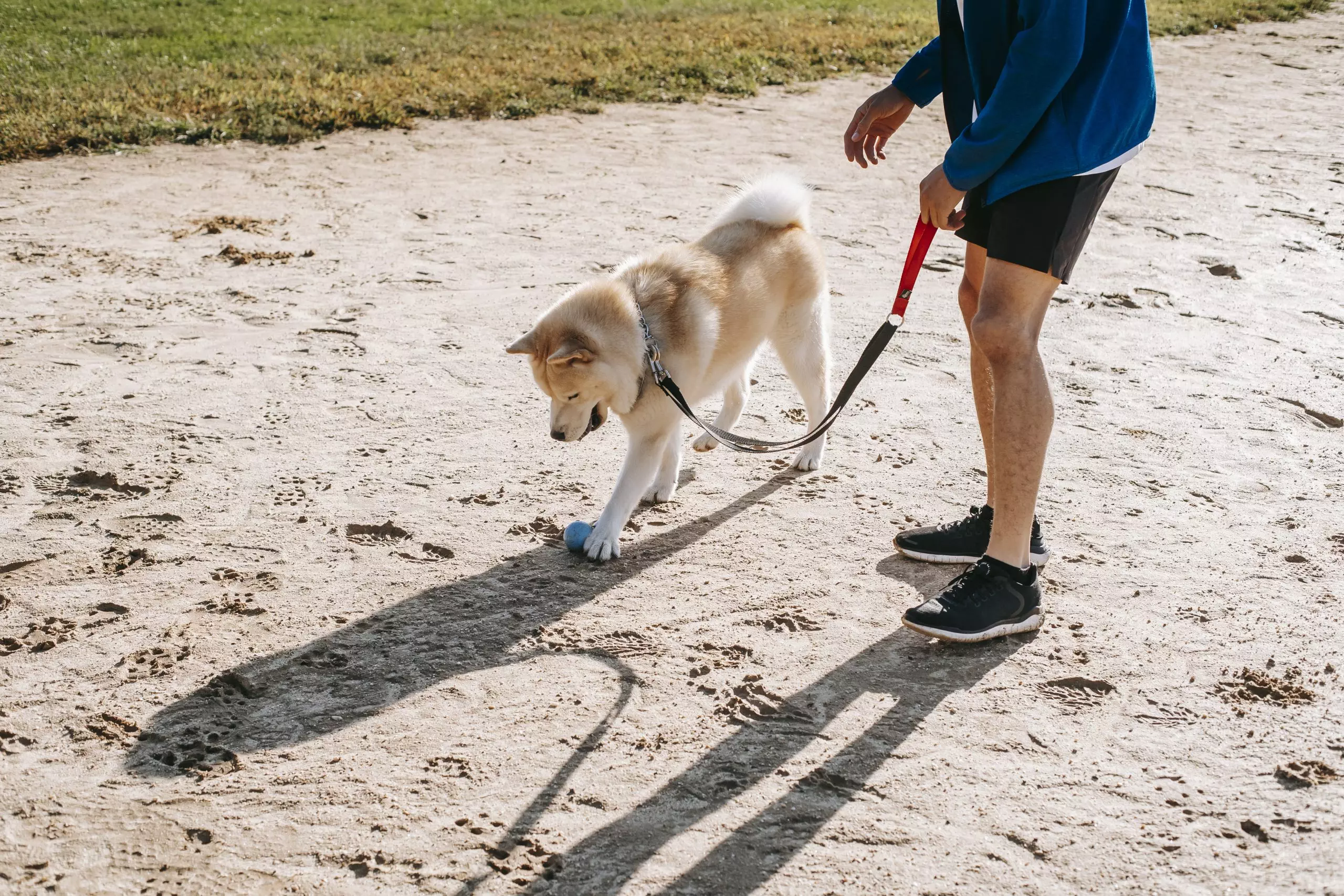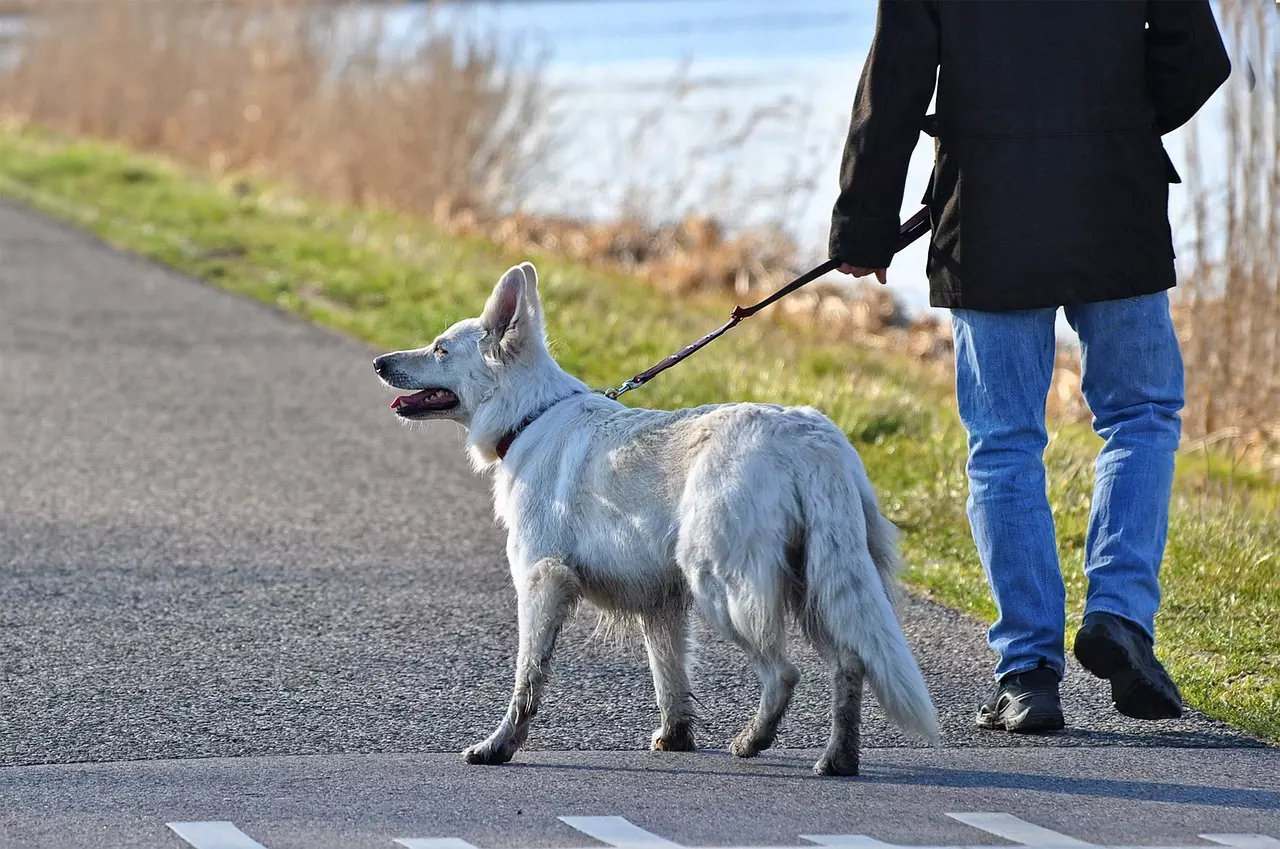Learn how to train your puppy to walk on a leash like a pro! From selecting the right gear to introducing gradual training sessions, this article provides simple and effective tips for a confident and well-behaved walker. Enjoy stress-free walks with your furry friend!
Are you struggling to teach your adorable new puppy how to walk on a leash? Don’t worry, we’ve got you covered! In this article, you will find simple and effective tips on how to train your puppy to walk on a leash like a pro. From selecting the right leash and collar to introducing gradual training sessions, we will walk you through each step to ensure that your furry friend becomes a confident and well-behaved walker in no time. Get ready to enjoy stress-free walks with your pup by your side!

1. Preparing for Leash Training
Leash training is an important skill for every puppy to learn. Before you begin the training process, it’s essential to gather the necessary equipment. This includes a collar and leash. Make sure that you choose the right collar and leash for your puppy’s size and breed. There are various types of collars available, such as buckle collars, martingale collars, and harnesses. Take your puppy’s comfort and safety into consideration when selecting the appropriate collar and leash.
Once you have the equipment, it’s time to familiarize your puppy with it. Introduce the collar and leash to your puppy in a positive and gentle manner. Gradually let them sniff and explore the equipment. This step helps your puppy become comfortable with wearing a collar and having a leash attached to it. Be patient during this process and provide lots of rewards and praise to create positive associations with the collar and leash.
2. Introducing the Leash to Your Puppy
To ensure a smooth leash training experience, it’s best to start indoors where your puppy feels safe and comfortable. Begin by attaching the leash to your puppy’s collar and letting them drag it around while supervised. This step allows your puppy to get used to the sensation of having a leash attached and helps them become familiar with the weight and movement.
Offer rewards and positive reinforcement during the leash introduction process. Use treats or their favorite toy to create positive associations with the leash. Whenever your puppy shows curiosity or approaches the leash willingly, reward them with treats and praise. This type of positive reinforcement helps your puppy associate the leash with pleasant experiences and motivates them to engage with it.
Practice short leash sessions indoors. Encourage your puppy to follow you while holding onto the leash. Start with just a few steps and gradually increase the distance. Remember to reward and praise your puppy for their efforts. This approach helps your puppy understand that being on a leash is a positive experience and sets the foundation for future walking sessions.

3. Teaching Basic Commands
Before embarking on leash training, it’s crucial to establish basic commands such as sit, come, and stay. These commands will provide you with better control over your puppy during walking sessions and help keep them safe.
To teach your puppy to sit, hold a treat close to their nose, and slowly move your hand upward. As their head follows the treat, their bottom naturally lowers into a sitting position. Once they are sitting, reward them with the treat and praise. Repeat this process several times, gradually adding the verbal cue “sit.” With consistent practice, your puppy will learn to associate the word “sit” with the action.
Teaching your puppy to come is vital for their safety when they are off-leash. Start in a quiet environment and call your puppy’s name while kneeling or crouching down. Reward them with a treat and praise when they come to you. Gradually increase the distance and practice in different areas, ensuring your puppy adheres to the command reliably.
To teach your puppy to stay, ask them to sit or lie down, then extend your hand out like a stop sign while saying “stay.” Take a step backward, and if your puppy stays in place, offer treats and praise. Gradually increase the distance and duration of the stay, always rewarding your puppy for their cooperation.
4. Walking on a Leash
Once your puppy is comfortable with the leash and has a grasp of basic commands, it’s time to venture into walking on a leash. Start in a calm and controlled environment, such as your backyard or a quiet park, where distractions are minimal.
Use treats and praise to encourage your puppy to walk beside you. Hold the leash in one hand and a treat in the other, enticing your puppy to stay close to your side. As they walk alongside you, reward them with treats and verbal praise. This positive reinforcement reinforces the desired behavior and encourages them to continue walking beside you.
Gradually increase the distance and duration of your walks. Begin with short walks and gradually extend them as your puppy becomes more comfortable. Remember to maintain a relaxed grip on the leash and avoid pulling or yanking them. Gentle guidance and positive reinforcement are more effective and promote a trusting relationship between you and your puppy.
5. Handling Common Challenges
During the leash training journey, you may encounter some common challenges that need to be addressed:
5.1 Pulling on the leash
If your puppy tends to pull on the leash, it’s essential to address this behavior early on. When they start pulling, stop walking and wait for them to return to your side. Once they are walking beside you again, reward them with treats and praise. Consistency is key, so be patient and persistent in reinforcing the expected behavior.
5.2 Reacting to distractions
Puppies are naturally curious and easily distracted by their surroundings. When your puppy becomes fixated on something, redirect their attention back to you using treats or a command, such as “focus” or “look.” Reward them for shifting their attention away from distractions and back to walking beside you.
5.3 Fear or resistance to the leash
If your puppy shows fear or resistance toward the leash, it’s crucial to address their anxiety gently. Gradually desensitize them to the leash by associating it with positive experiences and rewards. Practice short sessions with the leash indoors, gradually increasing the duration and adding more movement. Consult a professional trainer or behaviorist if your puppy’s fear persists or worsens.
6. Continuing Training and Reinforcement
To ensure your puppy’s leash training remains effective, it’s essential to practice regularly. Set aside dedicated time for leash walks and reinforce the desired behaviors consistently. By maintaining a regular routine, your puppy will understand the expectations and feel more confident during walks.
As your puppy becomes more proficient on the leash, gradually introduce distractions. Start in controlled environments and gradually expose them to various stimuli, such as other dogs, people, or noises. Use treats and praise to reward calm and controlled behavior, ensuring your puppy remains focused on you.
Continue reinforcing positive behavior throughout your puppy’s life. Regularly revisit the basic commands and incorporate them into your daily routine. This ongoing reinforcement strengthens the bond between you and your dog and helps maintain good leash manners.

7. Walking Etiquette
Teaching your puppy proper walking etiquette is essential for enjoyable walks and interaction with others. Here are some tips to consider:
7.1 Teach your puppy to walk beside you
Encourage your puppy to walk beside you, either on your left or right side, depending on your preference. Use treats and praise to reward them for staying by your side. This position allows for better control and prevents your puppy from pulling or wandering off.
7.2 Encourage appropriate sniffing and exploration
While walking, it’s important to allow your puppy time to explore their surroundings and engage in sniffing. Sniffing is a natural behavior for dogs and provides mental stimulation. However, establish boundaries to prevent excessive pulling or prolonged sniffing. Use cues like “let’s go” to encourage your puppy to continue walking.
7.3 Teach your puppy to ignore other dogs or people
Teach your puppy to ignore other dogs or people during walks by redirecting their attention back to you. Use treats or commands to regain their focus and reward them when they respond appropriately. Proper socialization is crucial, but ensuring your puppy remains focused on you during walks sets the foundation for polite behavior.
8. Exercising and Socializing
In addition to leash training, it’s important to provide your puppy with regular exercise. Daily walks not only fulfill their physical needs but also provide mental stimulation and an opportunity to explore different environments. Incorporate playtime and off-leash activities in safe areas to further satisfy their exercise requirements.
Encouraging socialization with other dogs is also vital for your puppy’s development. Organize playdates or enroll them in puppy socialization classes where they can interact with other well-behaved dogs. Controlled interactions teach them appropriate social skills, making them more confident and comfortable when encountering other dogs during walks.
Explore different environments to expose your puppy to a variety of sights, sounds, and smells. This exposure helps them become well-adjusted and adaptable to different situations and environments, reducing anxiety or fear reactions during walks.

9. Reinforcing Leash Training in Various Settings
To build on your puppy’s leash training skills, it’s important to practice in different settings. This ensures they can exhibit good leash manners regardless of the environment. Here are some ways to reinforce leash training in various settings:
9.1 Practice in busier areas
Gradually introduce your puppy to busier areas, such as parks or downtown areas, where there are more distractions. Start in less crowded areas and work your way up to more challenging environments. Use treats and praise to reward calm behavior and reinforce the training learned in controlled environments.
9.2 Walk on different surfaces
Expose your puppy to different surfaces, such as grass, pavement, or gravel. This helps them become comfortable walking on various terrains and prepares them for different walking conditions they may encounter in the future. Remember to reward and encourage them when they walk confidently on different surfaces.
9.3 Continue reinforcement during adulthood
Leash training should be an ongoing process throughout your dog’s life. Even when they reach adulthood, it’s important to reinforce good leash manners and practice regular training sessions. Consistency and reinforcement will help maintain the skills they learned as puppies, ensuring enjoyable and stress-free walks.
10. Troubleshooting and Seeking Professional Help
In some cases, you might encounter persistent challenges during leash training that require additional guidance. Here are some steps to consider:
10.1 Dealing with persistent challenges
If your puppy continues to struggle with leash training despite your efforts, it’s important to identify the root cause of the issue. Analyze their behavior and consult professional resources, such as books or online sources, for troubleshooting tips specific to your puppy’s challenges. Patience, persistence, and adaptability are key when addressing persistent issues.
10.2 Consult a professional trainer or behaviorist
Sometimes, seeking professional help is necessary. If you’re struggling with leash training or encountering behavior problems, consider consulting a professional dog trainer or behaviorist. They can provide individualized guidance and develop a training plan tailored to your puppy’s specific needs. With their expertise, you’ll gain valuable insight and support to address any challenges you may be facing.
10.3 Modify training techniques if needed
Every puppy is unique, and what works for one may not work for another. If you find that certain training techniques are not yielding the desired results, be open to modifying your approach. Adapt the training methods to suit your puppy’s temperament, learning style, and individual needs. Remember, patience and consistency are key when it comes to successful leash training.
Leash training is a valuable skill that enhances safety and allows you and your puppy to enjoy walks together. By following these comprehensive steps and maintaining a positive and consistent training approach, you’ll establish a strong foundation of leash manners that will benefit your puppy throughout their life. Enjoy the journey of training and bonding with your furry companion!





